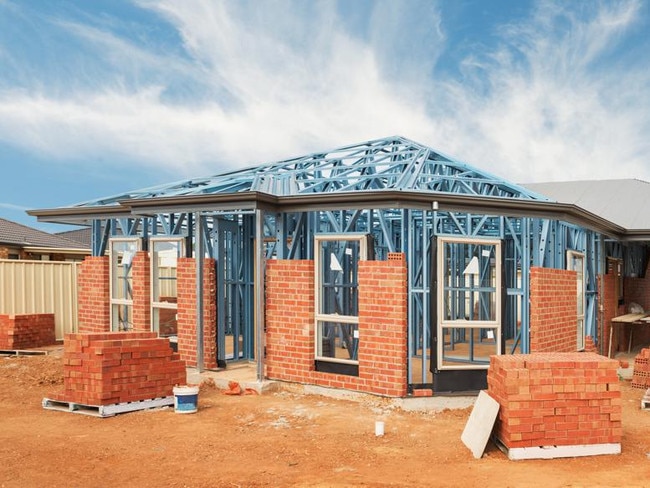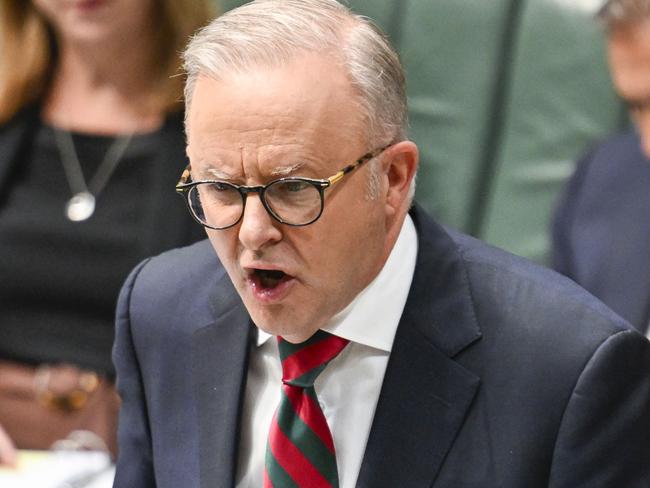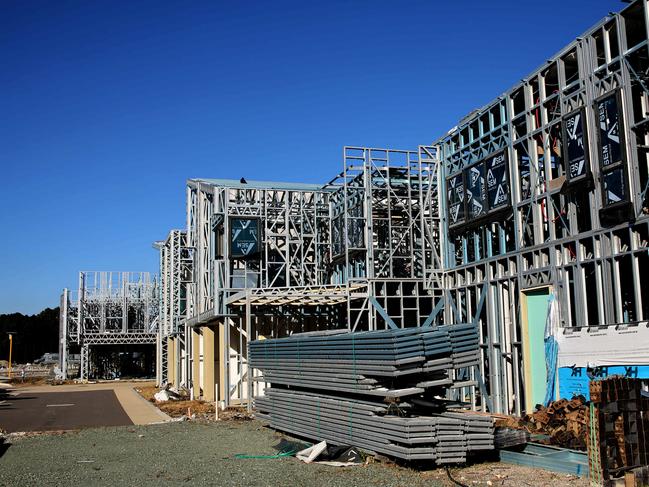Building sector sets out issues that need fixing to help reach Australia’s target of 1.2 million new homes in five years
The Albanese government is facing increased pressure to meet the demands of Australia’s building sector if the country is to have any hope of easing its housing crisis.

National
Don't miss out on the headlines from National. Followed categories will be added to My News.
Australia needs a skilled migration pathway for construction workers, incentives for employers to take on more apprentices, streamlined red tape and more pressure on states to urgently boost housing supply, the building sector says.
To reach the goal of 1.2 million new homes within five years sweeping reforms are urgently needed to trigger the necessary private investment in construction, Master Builders Australia has warned in a pre-budget submission to the Albanese Government.
Commonwealth payments to states and territories must be linked to progress on changes critical to meeting housing targets, like planning reform, delivery of utilities to new areas and reduction of taxes and charges imposed on new home building.

Master Builders chief executive Denita Wawn told this masthead demand for new homes was not being met because costs are “simply too high”.
“It’s great there is government spending in our sector, but we’re only going to realise the build goals if we remove the hurdles of private investment to flourish, and that at the moment is not occurring,” she said.
Inefficient regulation is also creating a huge burden on builders, and while Ms Wawn welcomed the government’s work to streamline red tape around modular prefab housing construction, she argued this was not the “panacea” to solve the homes shortage.
“Builders will tell us today that it is too expensive to utilise modern methods of construction, prefab, modular, at the moment when you’re doing volume building,” she said.
One simply fix advocated by the MBA is to allow builders to access regulation information for free, as placing some of the guidelines behind paywalls makes compliance “expensive and in some cases impossible”.

Skills shortages remains a key issue, which Ms Wawn said could be addressed through incentives for employers to take on more apprentices, and more support for group training organisations that have a higher trade completion rate.
She said a skilled migrant pathway dedicated to trades, and greater efforts to encourage Australian children in school to consider construction as a career are also needed.
“At the moment we can’t realise the 1.2 million new homes built unless we get more people into the sector from a skills perspective, and unless we resolve those regulatory burdens, so the quicker they get up, the more likely we will see costs of construction go down, which will then ignite the private investment into the industry,” she said.

With the federal election potentially weeks from being called, Ms Wawn said the key issues for the sector would be holding Labor to account on their commitment on the housing accord with states and territories, and pushing the Coalition to look at supply.
“(The Coalition) only just been talking about supply recently, they’ve been focusing too heavily on demand, and we have been advocating with them for a long time that they need to focus on supply,” she said.
“An important stat from our research is that 70 per cent of Australian voters believe that the federal government needs to take the leadership on the housing crisis, even though a lot of it is not their direct responsibility.”





